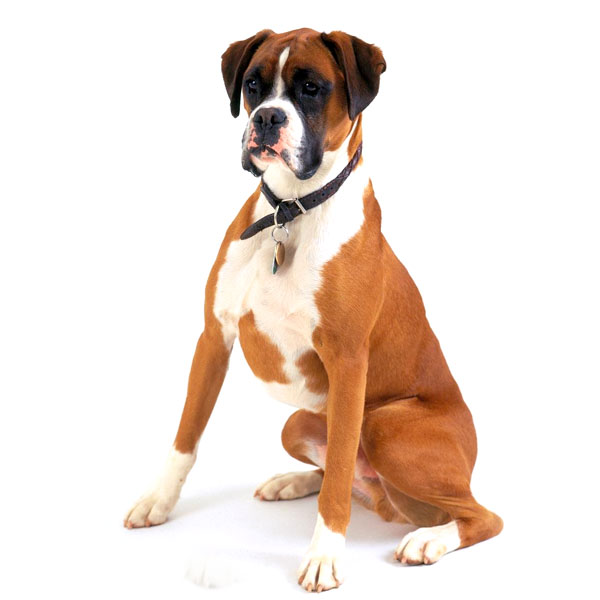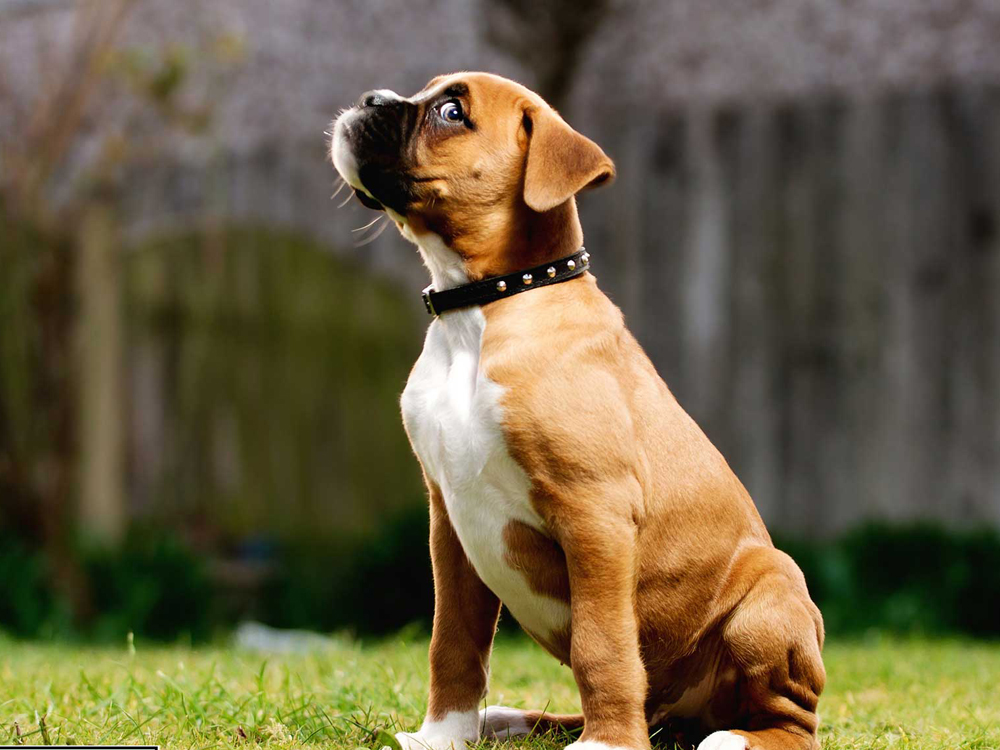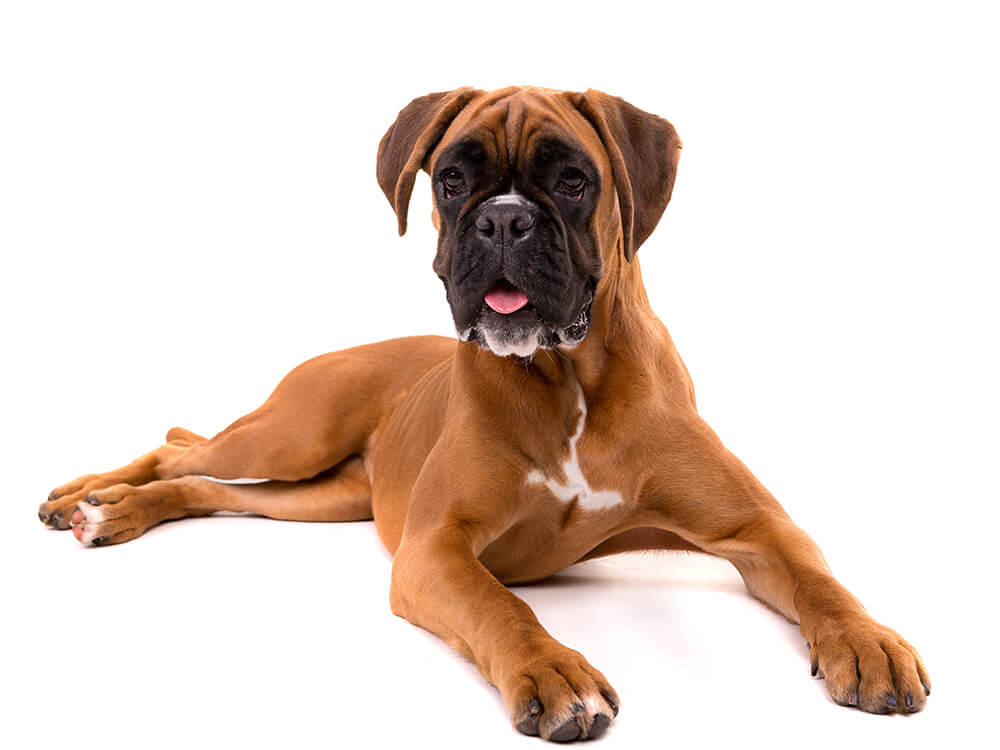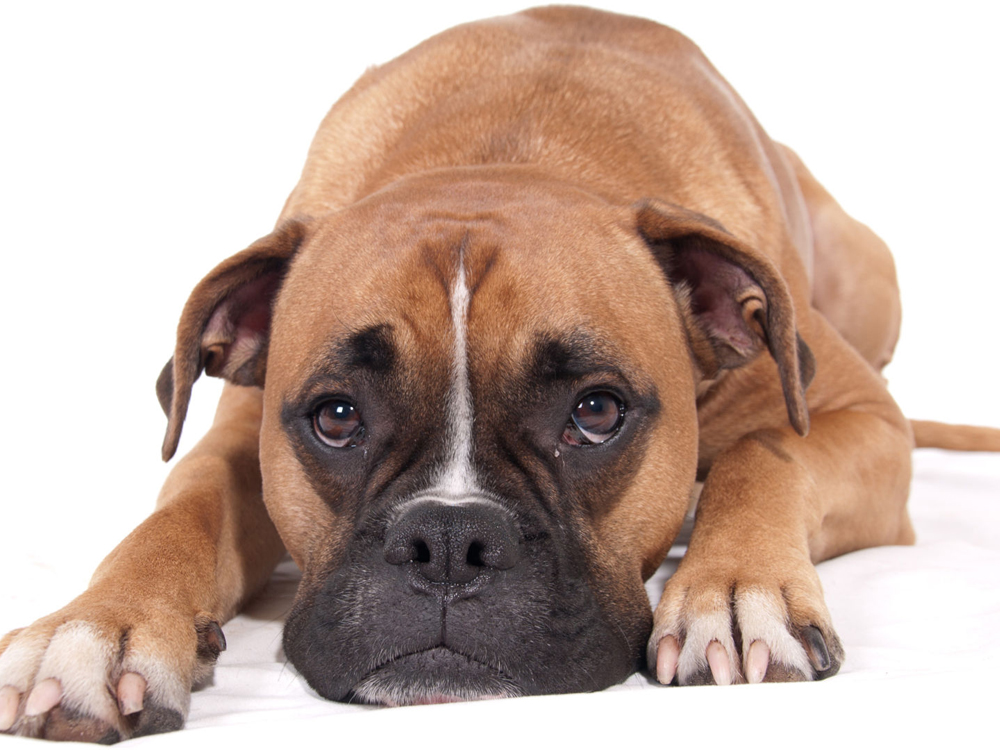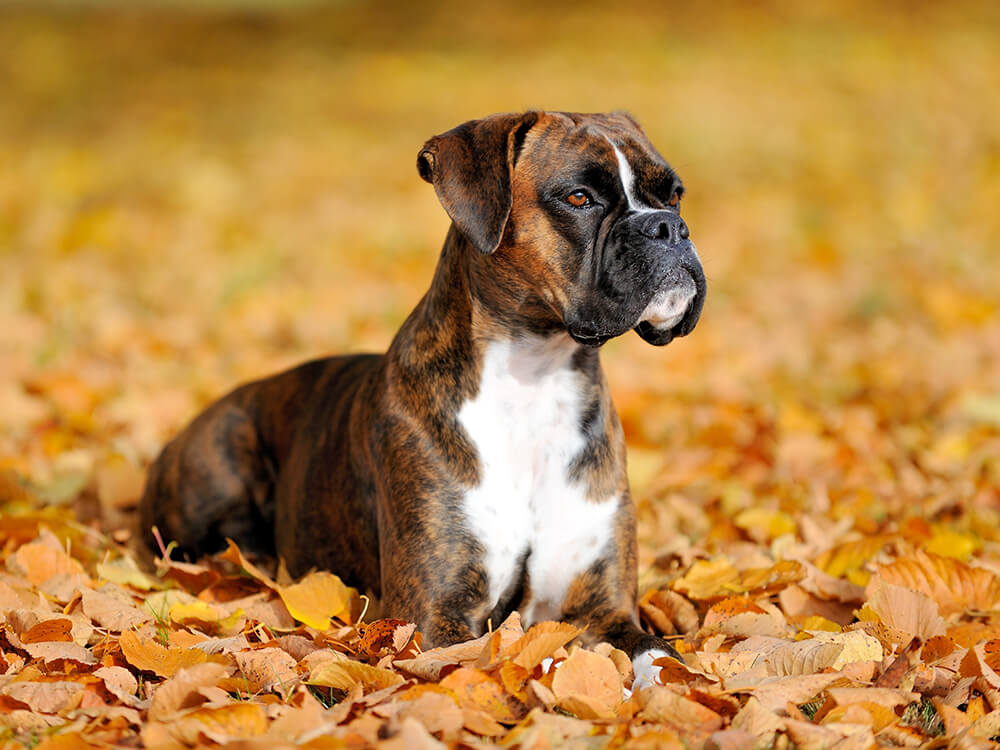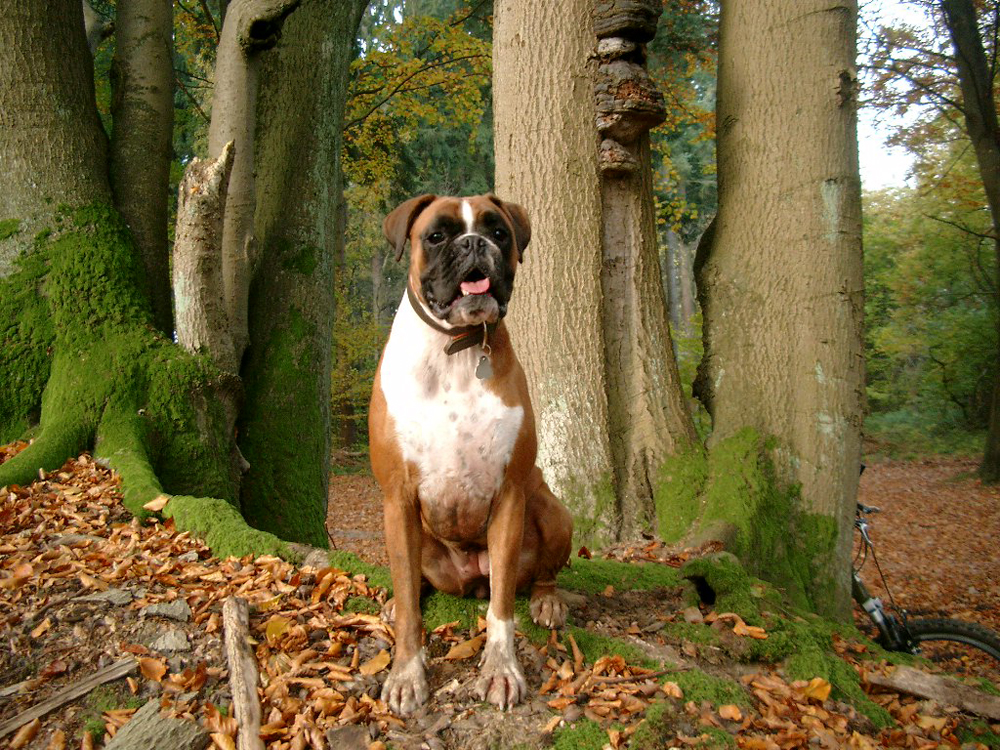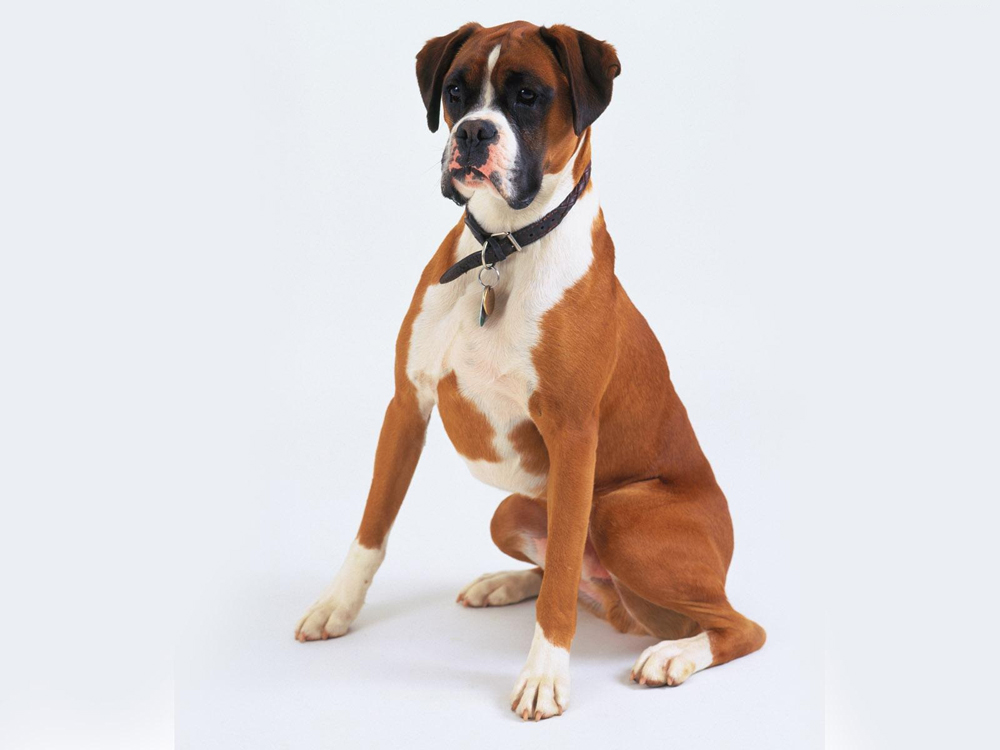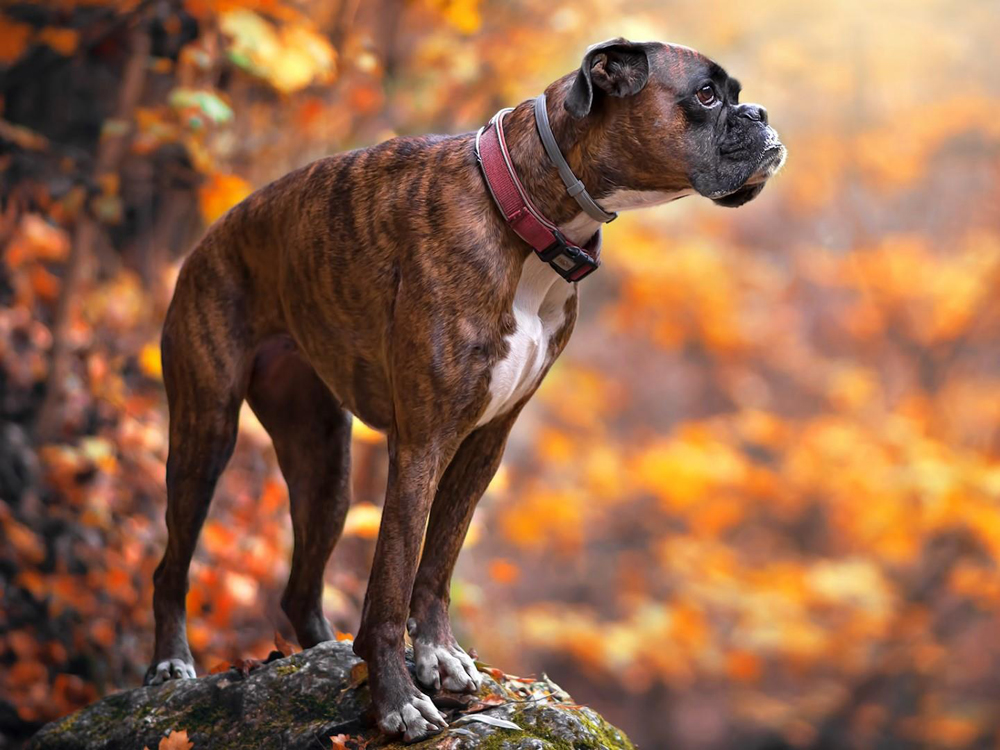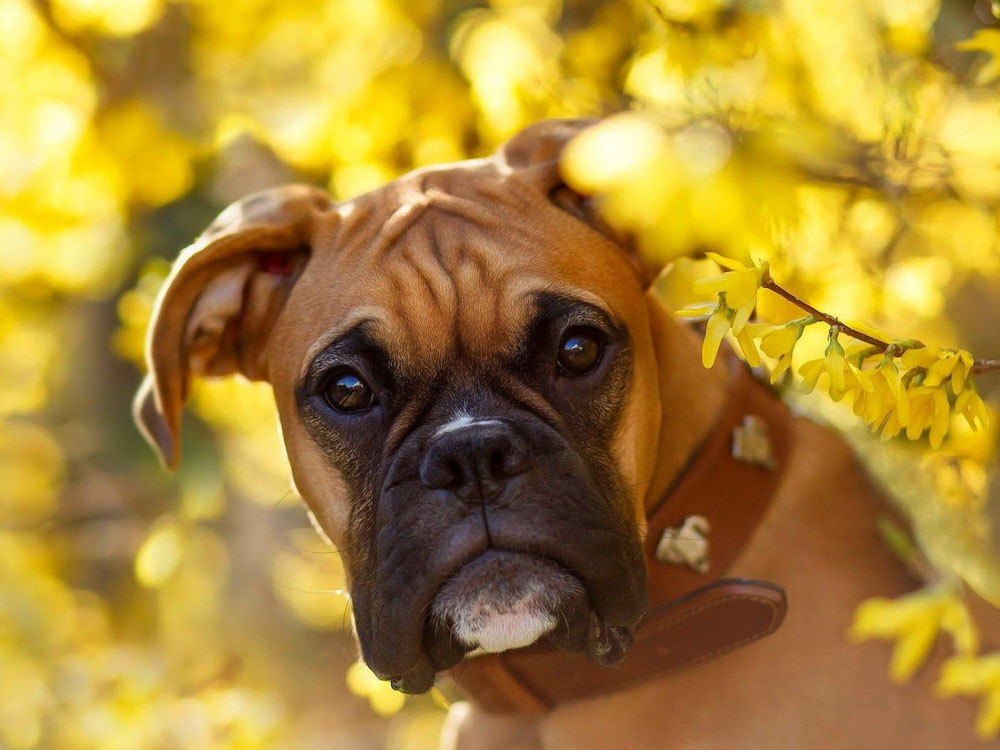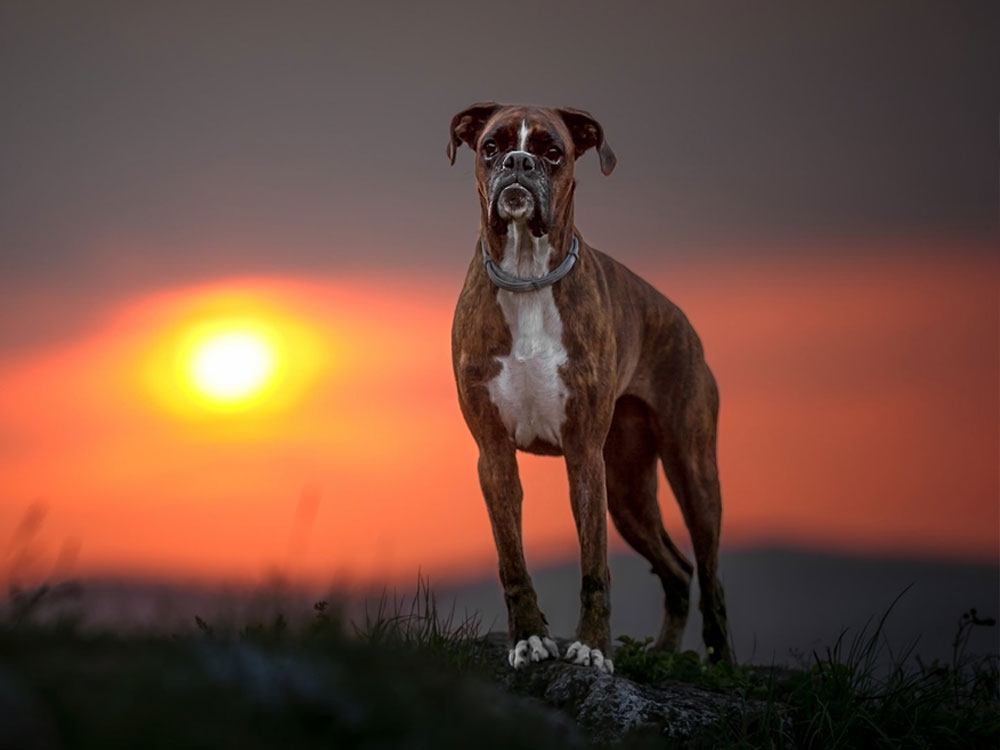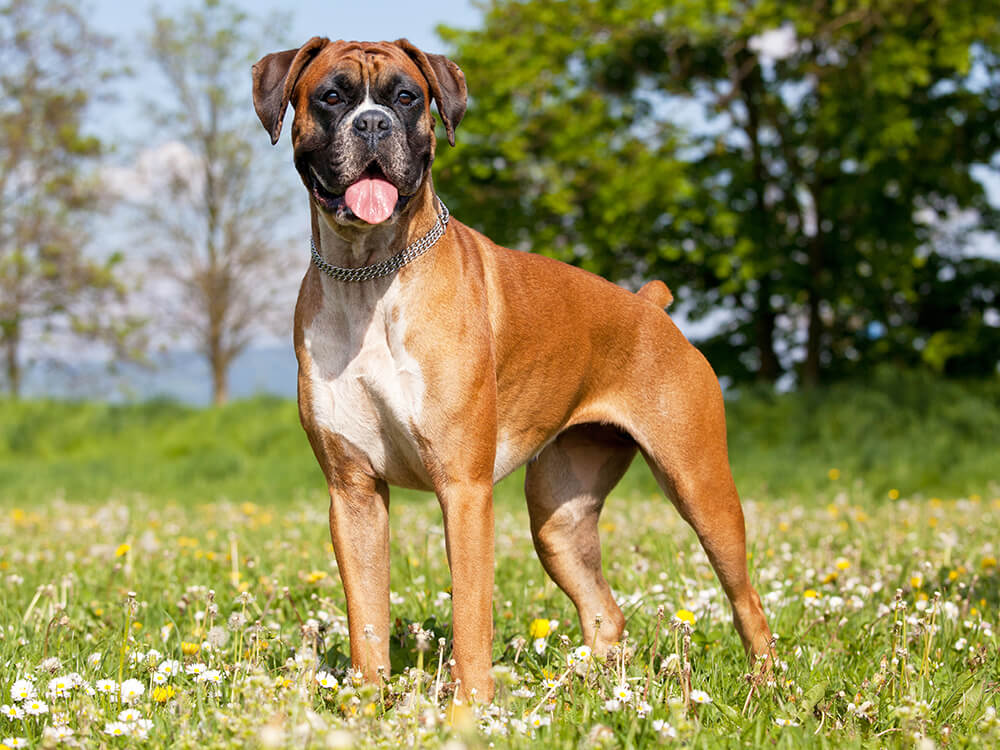
Boxer Breed Pictures
Vital Breed Stats
| Height: | 58 - 63 cm M | 54 - 59 cm F |
| Weight: | 65 - 80 kg M | 55 - 60 kg F |
| Breed Group: | Utility Dog Group |
| Life Expectancy: | 10 - 13 years |
| KC Registered: | No |
Breed Characteristics
| Size: |  |
| Grooming: |  |
| Exercise Level: |  |
| Trainability: |  |
| Barking Level: |  |
| Good with Children: |  |
| Good with other pets: |  |
| Affectionate: |  |
| Protective: |  |
| Cost to Keep: |  |
Give a thumbs up if you love the Boxer

0
More About the Breed
History
The medium-sized Boxer is a descendant of the now-extinct Bullenbeisser (a fighting dog with Mastiff ancestry) and the Bulldog. It was developed in Germany in the late 1890s as a hunter of deer, wild boar and bear, and then later on used to guard and drive cattle. The first German Boxer that joined a dog show in Munich in 1895 was named Flocki. In 1904, the Boxer breed standard was first published.
In the 1930s, the Boxer arrived in England and the British Boxer Dog Club was formed. It was recognised by The Kennel Club shortly thereafter and was included at Cruft's Dog Show events. Today’s Boxers come from the first Champion Boxer bred in the UK after World War II owned by Mrs. Caro.
Appearance
Grooming
Grooming is a breeze as it only requires weekly brushing and a grooming glove is the perfect tool to use. Bathing can be done as needed.
It is important to brush your dog’s teeth and provide chew toys to avoid dental problems. Always clean its ears, trim its nails and inspect for red spots and fleas. Owners tend to only focus on maintaining their dog’s coat and overlook other aspects of grooming.
Temperament
Intelligence
Boxers are intelligent but have a tendency to be independent and stubborn so they are not suited for first-time owners. They respond better to people that are firm and consistent. However, firm does not mean harsh. Instead of strict training methods, positive reinforcements are more effective in teaching this breed basic dog manners and tricks. It needs early socialisation so it does not become aggressive towards other animals.
Dog breeds have certain predisposed characteristics but this does not mean that each dog will inherit all of them. Remember that hereditary, environment, training, and socialisation will help shape the overall qualities of your pet dog.
Nutrition
- Senior and less active: up to 1,300 calories daily
- Typical adults: up to 1,500 calories daily
- Physically active/working dogs: up to 1,670 calories daily
Feeding
Health
Exercise
Cost of Ownership
A lot of prospective owners do not take into account the huge expenses that go with dog ownership. Apart from basic necessities and food, there can be unforeseen costs brought about by veterinary treatments. Raising a Boxer can roughly cost £130 to £160 a month, depending on a lot of factors. Initial equipment and supplies can be around £200. Food costs range from £60 to £70 monthly. The great thing about Boxers is that they do not require expensive professional services.
Adding to your expenses are neutering/spaying, routine check-ups, vaccination, and flea/worm treatments that can add up to £1,000 annually. These do not include major surgeries or long-term treatments. Insurance coverage (monthly payment of £50 for basic and £100 for lifetime coverage) will save you from unexpected vet costs. Price range for a puppy Boxer is around £900 to £1,200.
Is a Boxer Right for You?
- The Boxer is a loving, loyal and protective companion.
- It is comical and takes time to fully mature.
- This breed has low-maintenance grooming needs.
- As working dogs, Boxers have high energy and exercise needs.
- They can be destructive when left alone or unable to let off steam.
